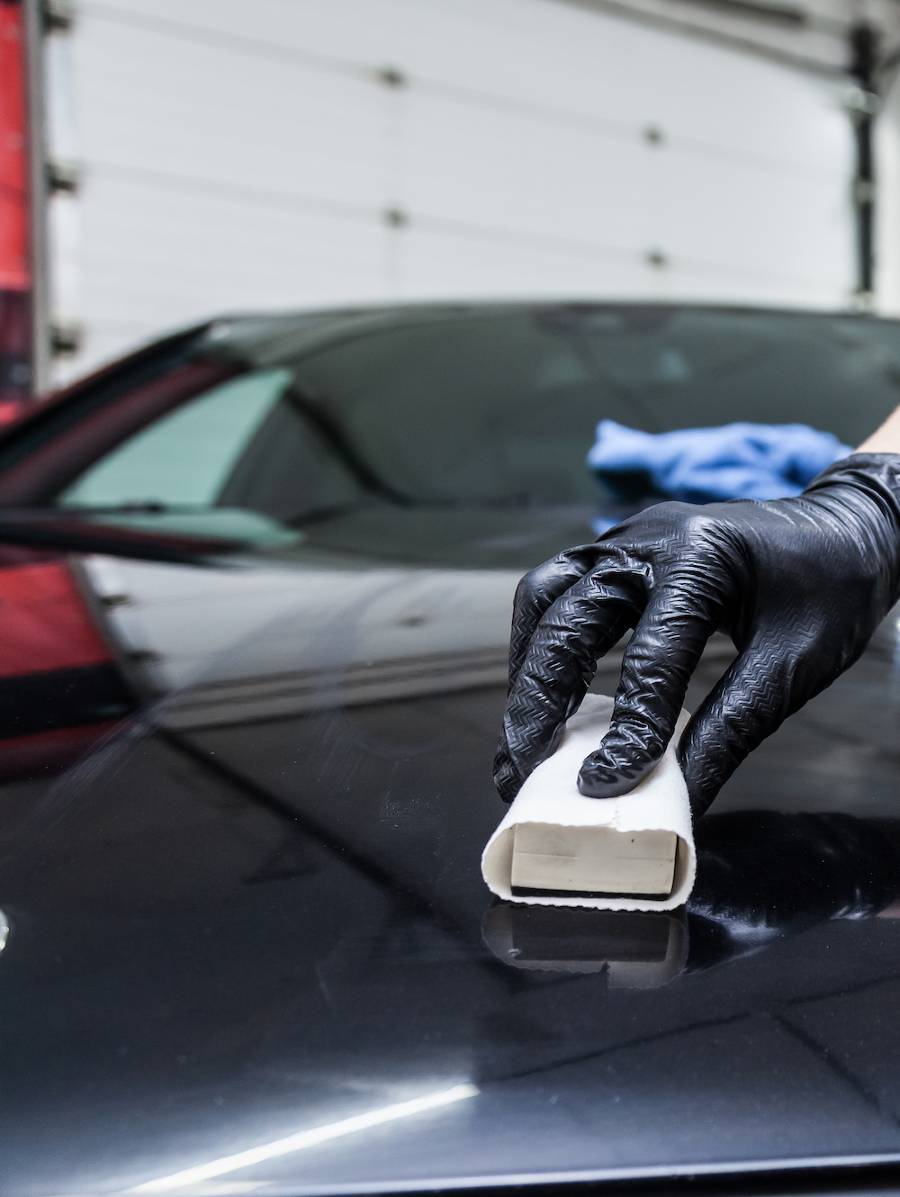Why Ceramic Layer Is the Ultimate Solution for a Flawless Complete
Ceramic covering has actually become a leading solution for those seeking a perfect coating for their vehicles, thanks to its remarkable resilience and protective attributes. This sophisticated fluid polymer not just bonds effortlessly with factory paint however likewise supplies a formidable barrier versus usual hazards such as scrapes, UV rays, and toxic wastes. Its hydrophobic homes simplify upkeep while boosting aesthetic charm. Understanding how this technology contrasts to standard approaches and exploring its application nuances can disclose even a lot more concerning its value. What aspects truly established ceramic finish apart?
What Is Ceramic Finishing?

When used correctly, ceramic coating creates a hydrophobic surface area that wards off water and dust, making it easier to clean up and keep. Unlike traditional waxes or sealants, which generally provide temporary defense, ceramic finishes can last for numerous years, relying on the item quality and application approach. The procedure of applying ceramic finish requires precise prep work, including thorough cleansing and sometimes repaint improvement, to make sure optimum bonding and performance.
Ceramic coatings are not restricted to automotive surfaces; they can also be utilized on numerous products, including glass, metal, and plastics, offering a versatile service for boosting protection. Generally, ceramic layer represents a significant improvement in surface security modern technology, integrating both aesthetic and functional benefits for a vast array of applications.
Advantages of Ceramic Covering
While many surface area defense alternatives exist, the advantages of ceramic covering stand out as a result of its unique buildings and resilient performance. One of the primary benefits is its exceptional toughness. Ceramic Coating Philadelphia. Unlike typical wax or sealants that need frequent reapplication, ceramic finishings offer a durable layer that can last for a number of years, substantially reducing upkeep initiatives
Another remarkable benefit is improved defense versus environmental impurities. Ceramic finishings produce a hydrophobic surface area that wards off water, dirt, and various pollutants, making it less complicated to clean. This attribute not just preserves the lorry's appearance but additionally minimizes the threat of rust and oxidation, especially in rough climate condition.
In addition, ceramic finishings supply exceptional resistance to UV rays, avoiding fading and deterioration of paint gradually. This UV protection is critical for preserving the aesthetic worth of surfaces and lorries revealed to route sunshine.
Furthermore, the shiny surface achieved with ceramic finish boosts the general aesthetic appeal, giving surfaces a showroom-quality shine. Generally, ceramic coverings stand for a considerable development in surface defense technology, giving enduring advantages that deal with both visual and practical demands.
Just How It Functions
Comprehending the scientific research behind ceramic layers discloses how they provide such impressive security and durability. At its core, a ceramic finish is a fluid polymer that chemically bonds with the vehicle's factory paint.
The application process includes multiple steps, consisting of surface area prep work, which is important to attaining optimal bond. When applied, the covering undergoes a healing procedure, throughout which it sets and creates a semi-permanent bond with the paint surface. This bond is what distinguishes ceramic coverings from conventional waxes and sealants, providing a longer-lasting safety obstacle that can sustain for years.
Additionally, the thickness of the coating can improve its safety top qualities, ensuring that it can endure rough conditions. Eventually, the science of ceramic finishings combines innovative products with innovative application methods to deliver an unmatched level of protection and visual improvement for cars.
Comparison With Conventional Approaches
The benefits of ceramic finishes end up being specifically evident when compared to typical paint defense approaches such as sealants and waxes. While waxes supply a temporary luster, normally lasting a couple of weeks to a number of months, ceramic layers offer a long-lasting protective layer that can sustain for a number of years. This durability substantially minimizes the regularity of important site reapplication, making ceramic coverings an extra economical service gradually.
Furthermore, conventional techniques commonly call for extensive preparation and multiple applications to accomplish a sufficient level of defense. In comparison, ceramic layers bond at a molecular degree with the lorry's surface area, developing a robust shield against environmental pollutants like UV rays, acid rainfall, and road salts. This bond improves the vehicle's resistance to scrapes and swirl marks, which prevail with typical waxes and sealants.
In addition, the hydrophobic buildings of ceramic coatings ward off water and dirt, leading to less complicated cleansing and upkeep. In comparison, wax and sealant-treated surfaces can draw in crud, necessitating more frequent cleaning - Ceramic Coating Philadelphia. Overall, ceramic coverings not just give premium protection yet additionally provide a much more visually enticing and long-lasting surface, developing them as the favored selection for critical automobile proprietors
Application and Upkeep Tips

Making use of a foam applicator, use the coating in little areas, adhering to the maker's guidelines regarding density and overlap. Permit sufficient treating time between layers, normally 24 hr, to guarantee this contact form appropriate bonding. After application, it is vital to prevent exposure to water or rough aspects for a minimum of a week to permit the finishing to fully heal.
Furthermore, using a ceramic upkeep spray can enhance the coating's hydrophobic properties and longevity. Routine evaluations for any indicators of wear will assist keep the covering's integrity and protect that excellent surface.
Final Thought
In final thought, ceramic finishing arises as a remarkable option for achieving a perfect automobile surface. By forming a robust bond with manufacturing facility paint, ceramic layer effectively guards versus scratches, UV rays, and ecological contaminants.
